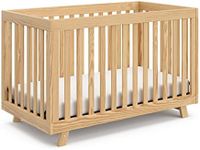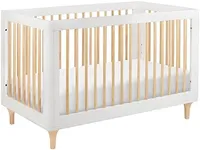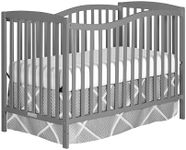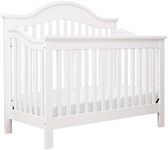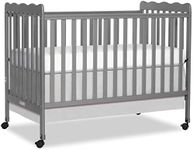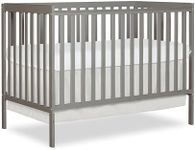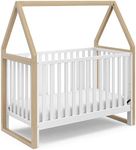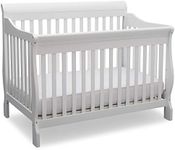Buying Guide for the Best cribs
Choosing the right crib is an important decision for any parent or caregiver, as it directly affects your baby's safety and comfort. When shopping for a crib, you want to focus on features that ensure security, durability, and convenience. It's also important to consider how long you plan to use the crib and whether you want it to adapt as your child grows. By understanding the key specifications, you can make a choice that fits your space, lifestyle, and your baby's needs.Safety StandardsSafety standards refer to the regulations and certifications that ensure a crib is built to protect your baby from harm. This is the most important aspect to consider, as it covers things like the spacing of the slats, the strength of the materials, and the absence of hazardous chemicals. Always look for cribs that meet recognized safety certifications, such as those set by national or international safety organizations. If a crib meets these standards, you can be confident it has passed rigorous testing. Never compromise on safety, and avoid older or secondhand cribs that may not meet current guidelines.
Adjustable Mattress HeightAdjustable mattress height means the crib allows you to change the level of the mattress as your baby grows. This feature is important because it helps you easily reach your newborn when they are small, and then lower the mattress as they start to sit or stand, preventing them from climbing out. Cribs usually offer two to four height settings. If you want maximum convenience and safety, choose a crib with at least three height options. Think about your own height and how long you plan to use the crib to decide how many levels you need.
Convertible DesignA convertible crib can be transformed into other types of beds, such as a toddler bed, daybed, or even a full-size bed. This is important if you want a crib that grows with your child, saving you the trouble and expense of buying new beds as your child gets older. Some cribs convert in multiple stages, while others may only offer one or two options. If you want long-term use, look for a crib with more conversion possibilities. Consider your future plans and whether you want a piece of furniture that adapts over time.
Size and DimensionsThe size and dimensions of a crib determine how much space it will take up in your nursery and what size mattress you will need. Standard cribs are larger and fit standard crib mattresses, while mini cribs are more compact and suitable for smaller spaces or for use as a secondary crib. Measure your available space before shopping and decide if you need a full-size crib for long-term use or a mini crib for portability or limited space. Always ensure the mattress fits snugly with no gaps.
Material and Build QualityMaterial and build quality refer to what the crib is made of and how sturdy it is. Most cribs are made from wood, but the type of wood and the quality of construction can vary. Solid hardwoods are more durable and long-lasting, while softer woods or engineered materials may be lighter but less robust. Check for smooth finishes, strong joints, and non-toxic paints or stains. If you want a crib that lasts through multiple children or converts into other beds, prioritize strong materials and solid construction.
Ease of Assembly and MaintenanceEase of assembly and maintenance means how simple it is to put the crib together and keep it clean. Some cribs come with clear instructions and all necessary tools, while others may be more complicated. Look for cribs with straightforward assembly if you prefer to set it up yourself. Also, consider how easy it is to wipe down surfaces and whether the design has areas that can trap dust or dirt. If you value convenience, choose a crib that is easy to assemble and maintain.



